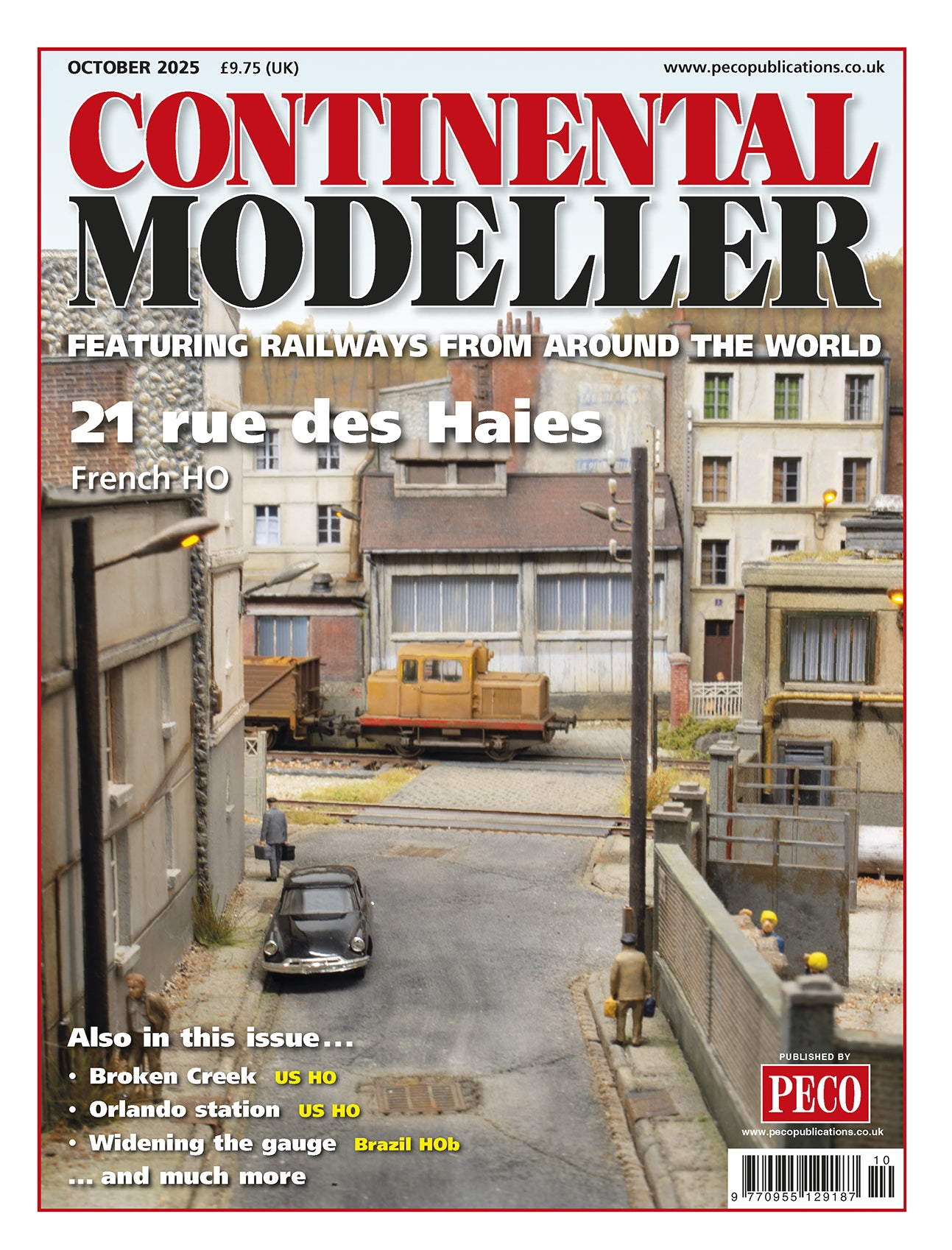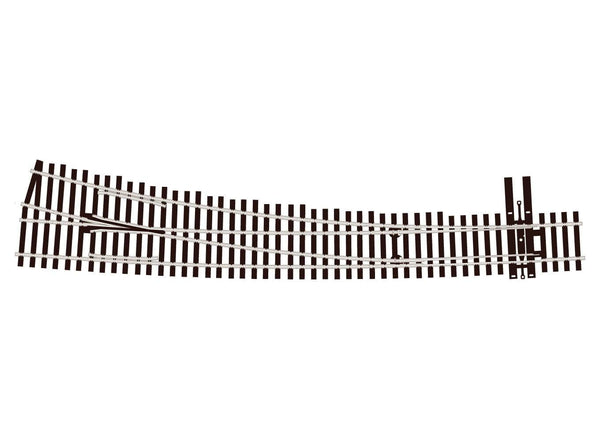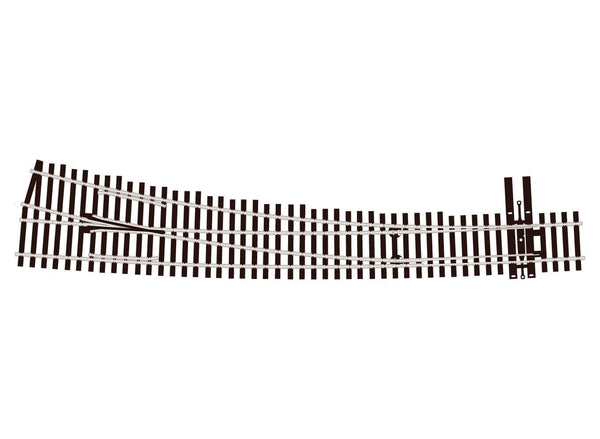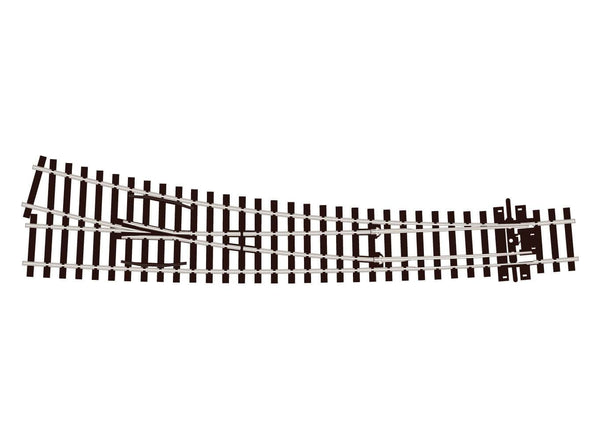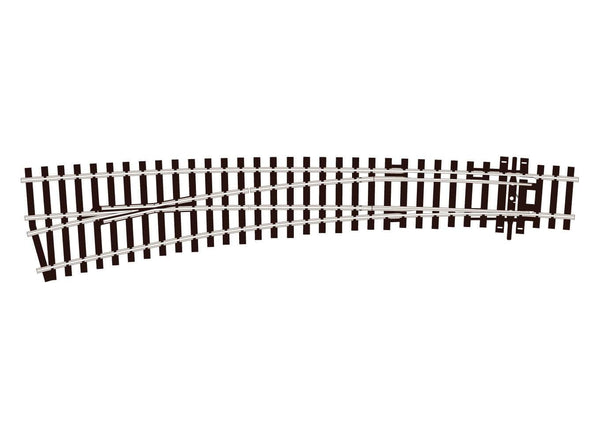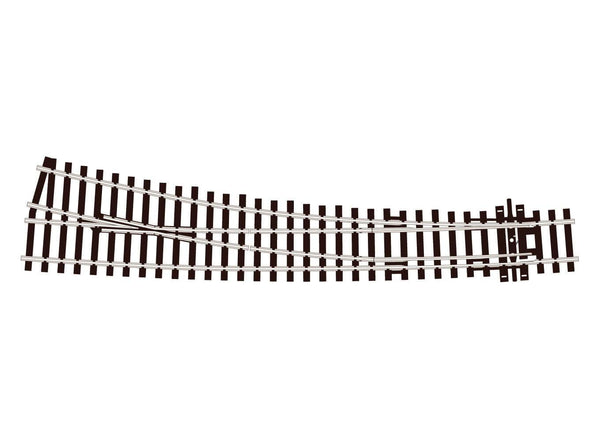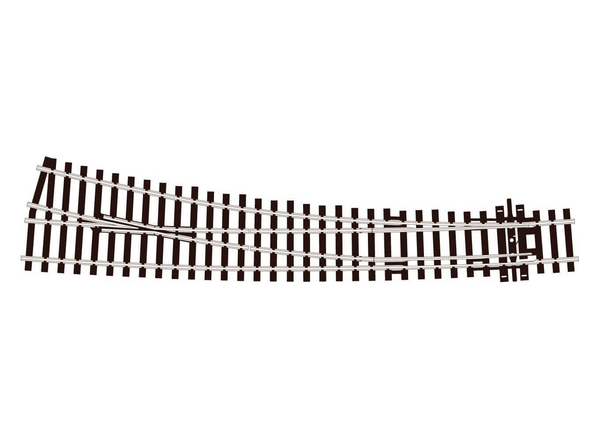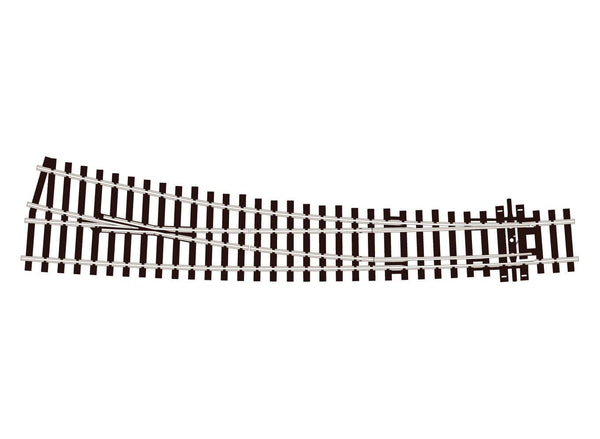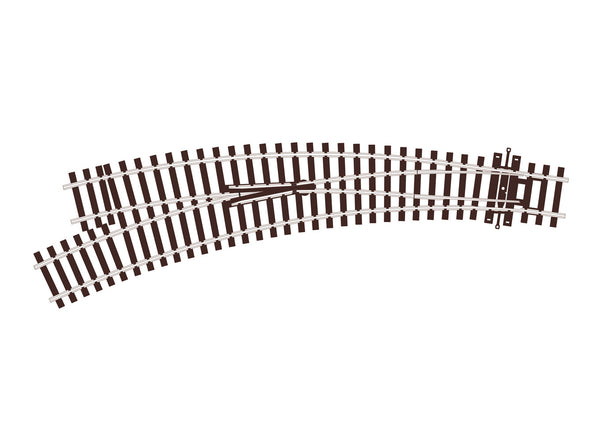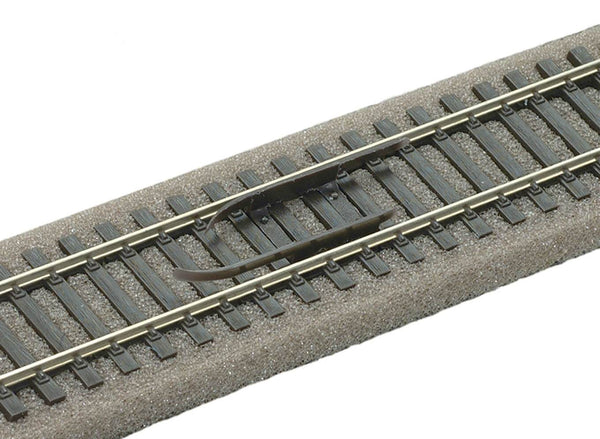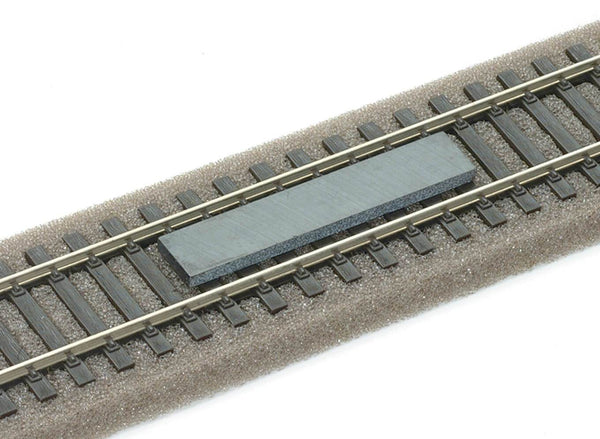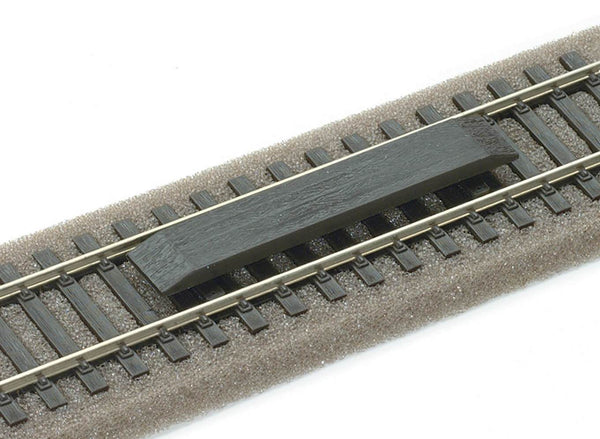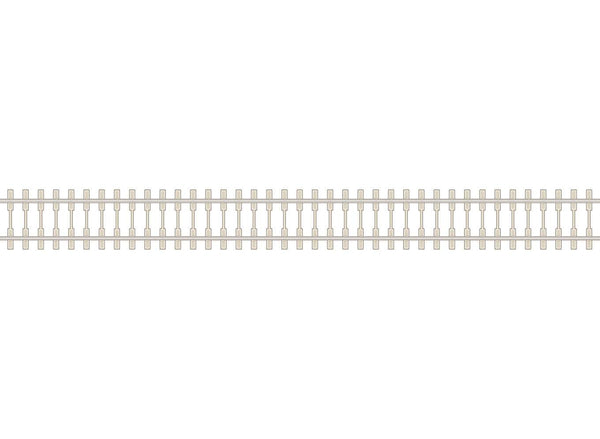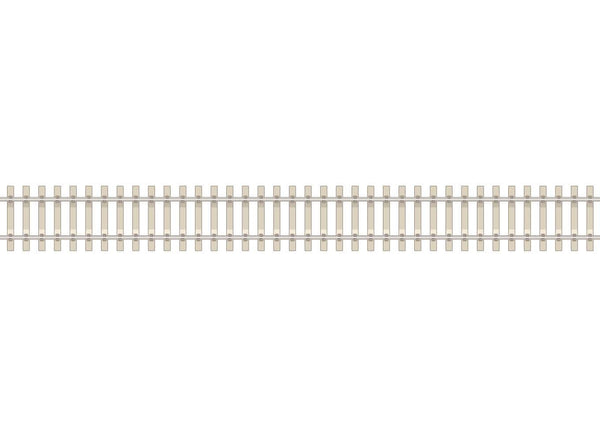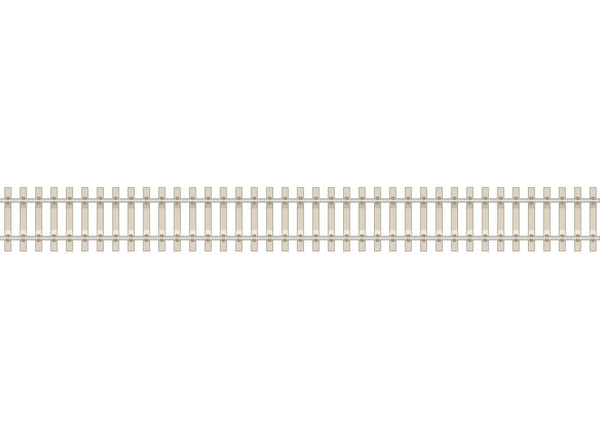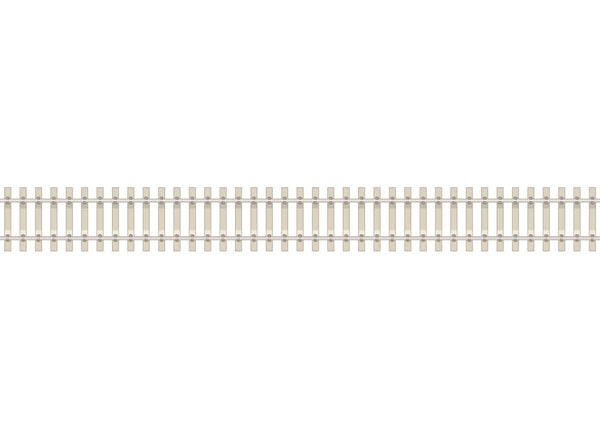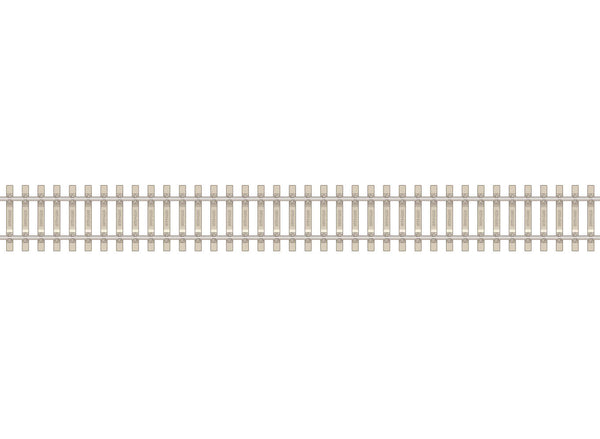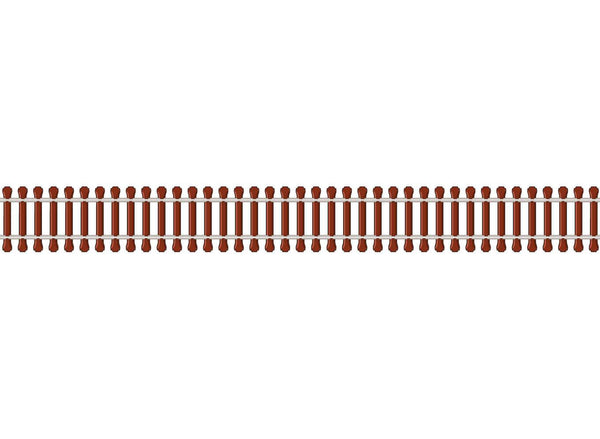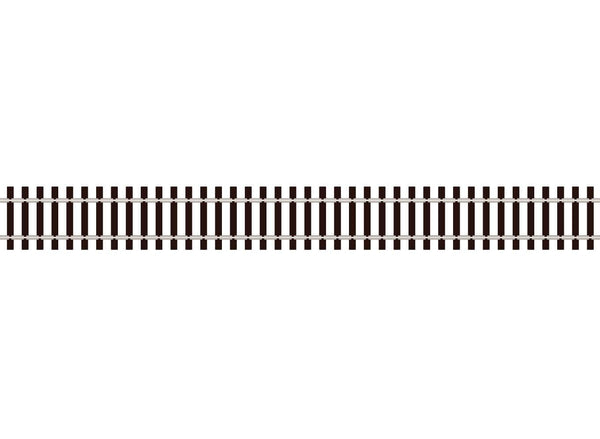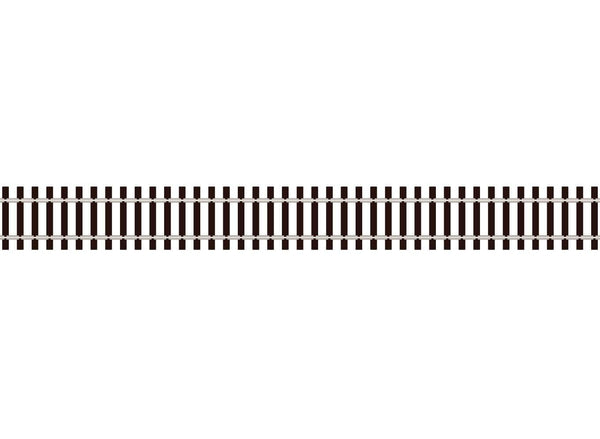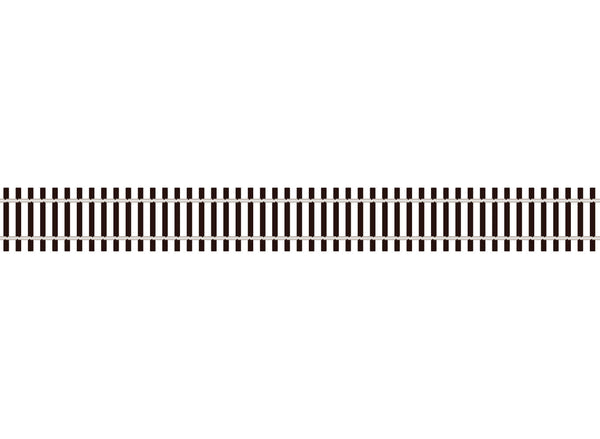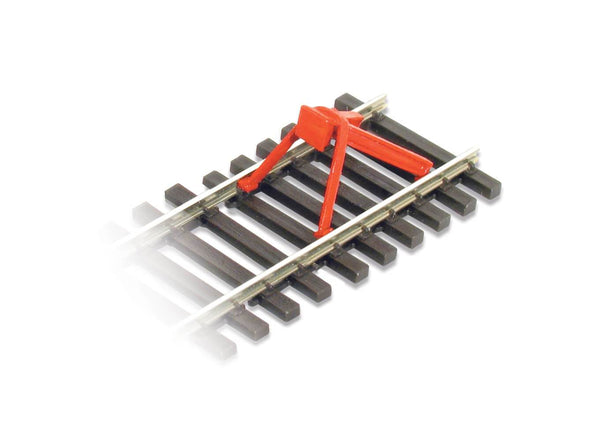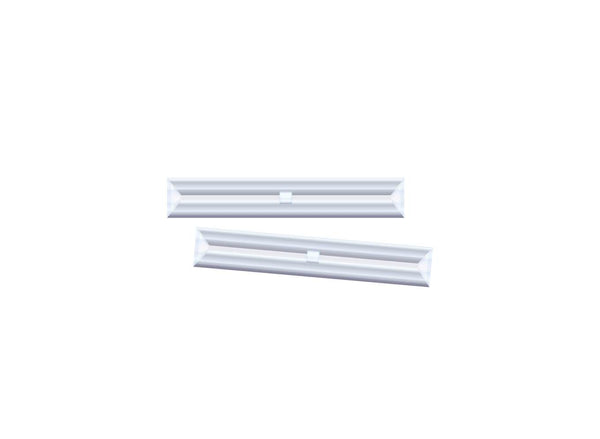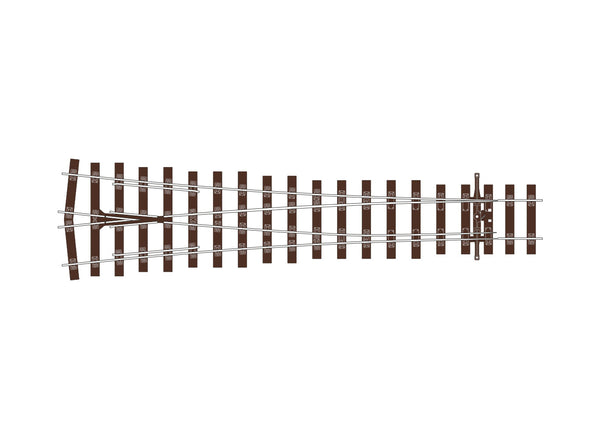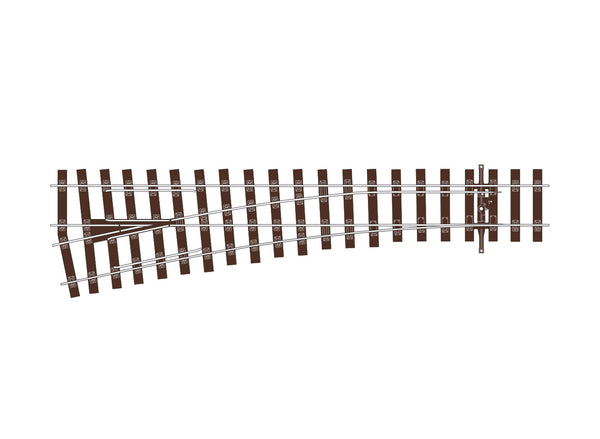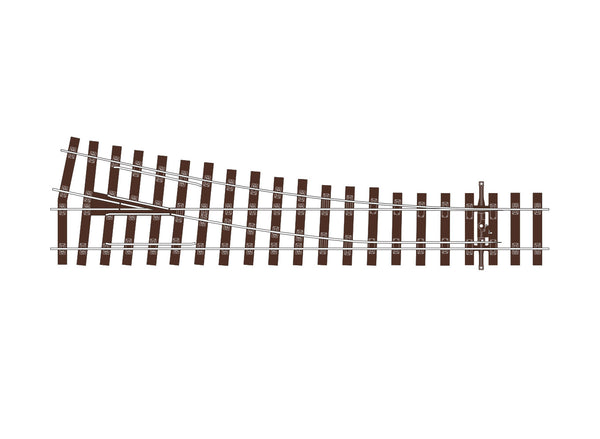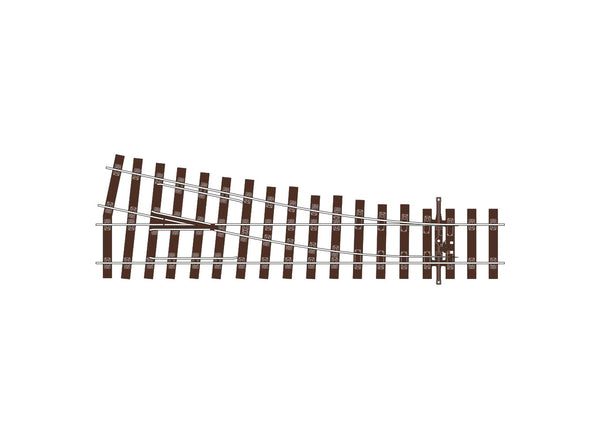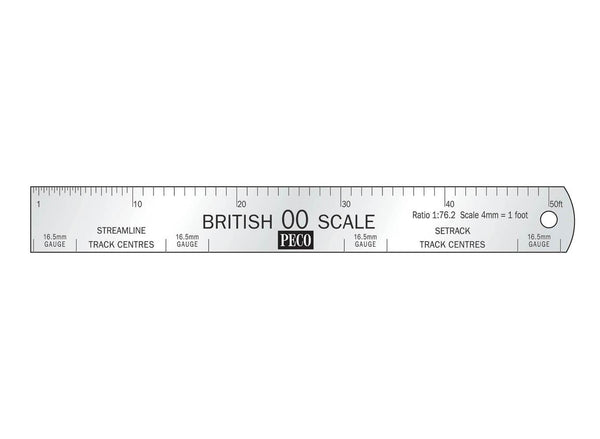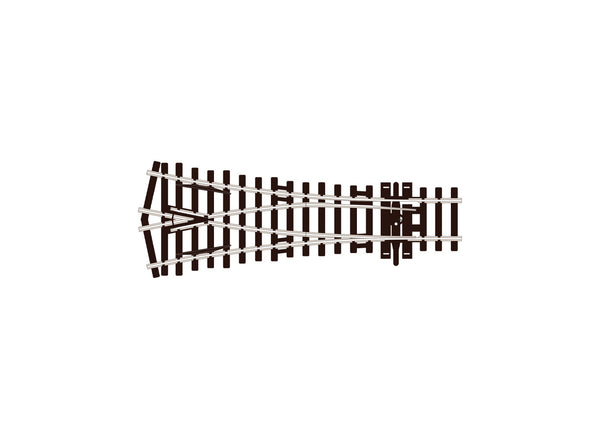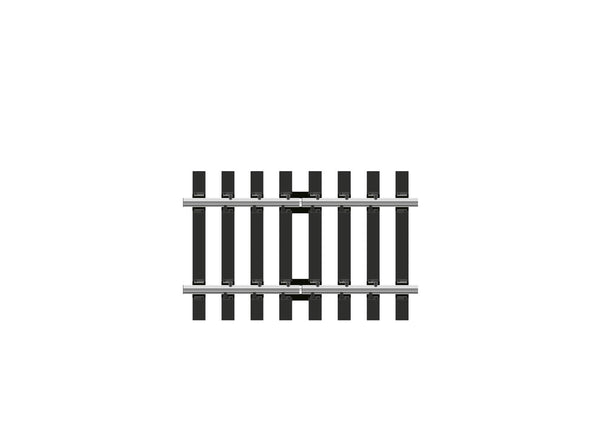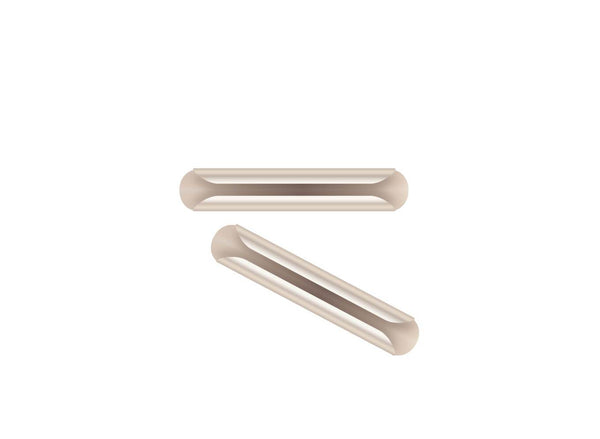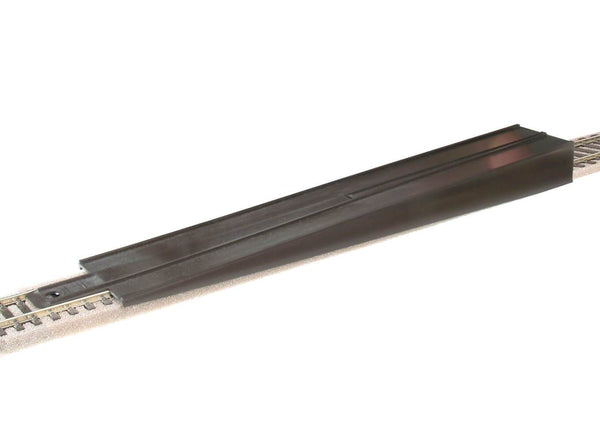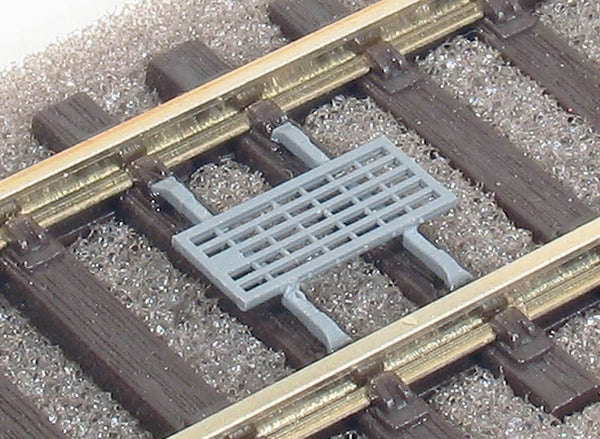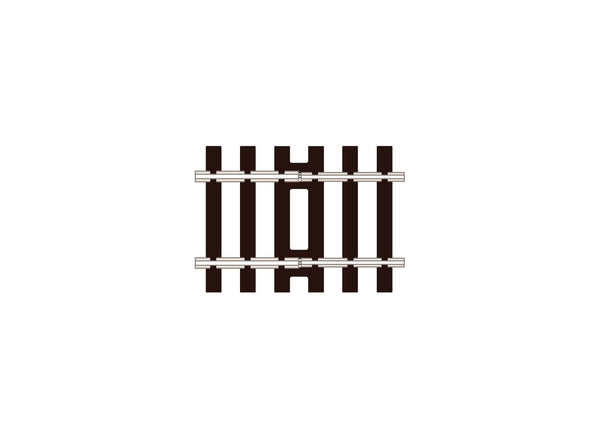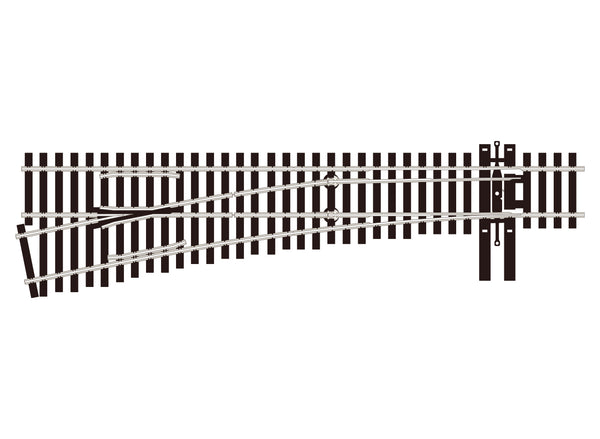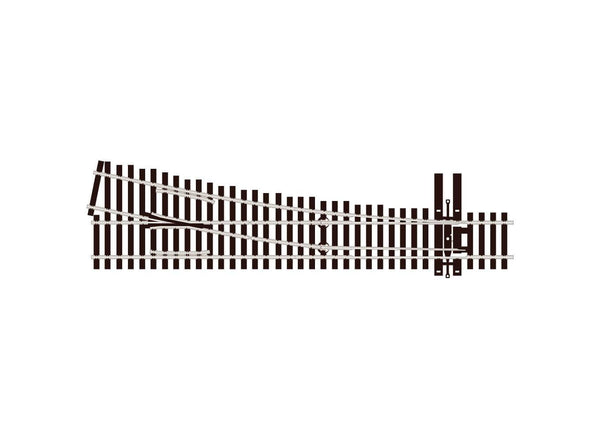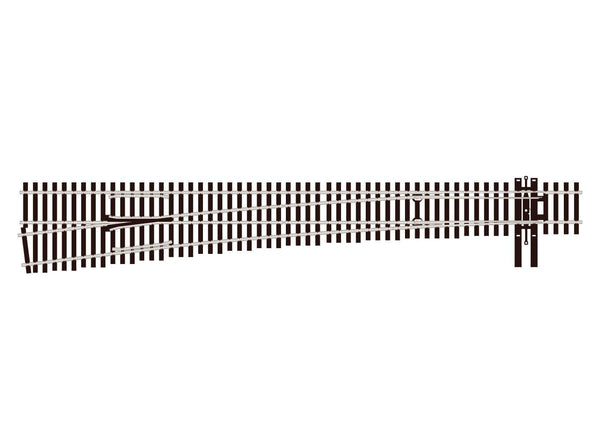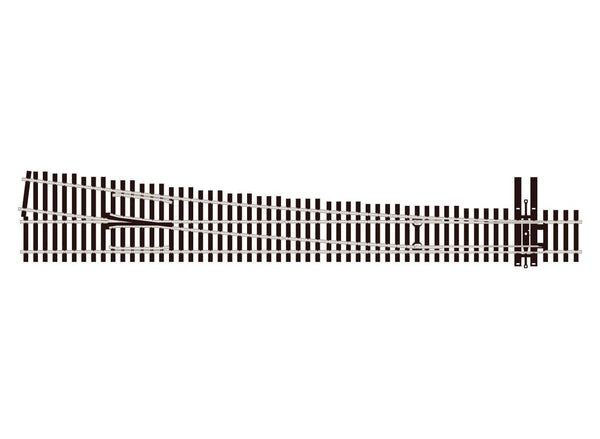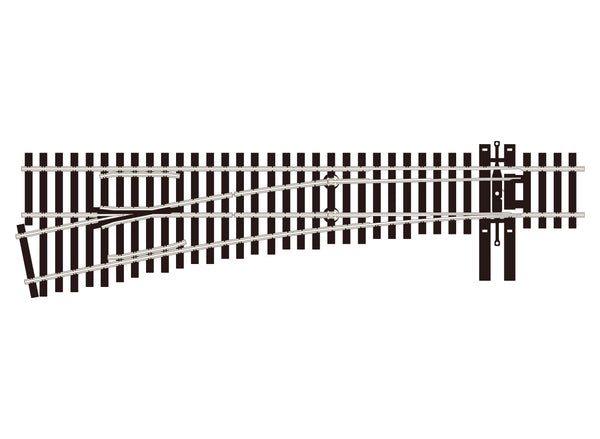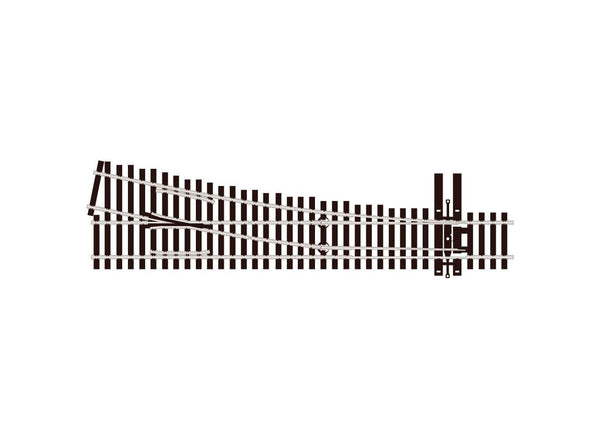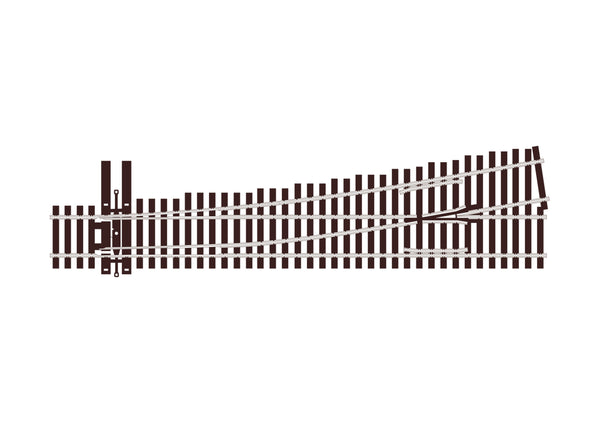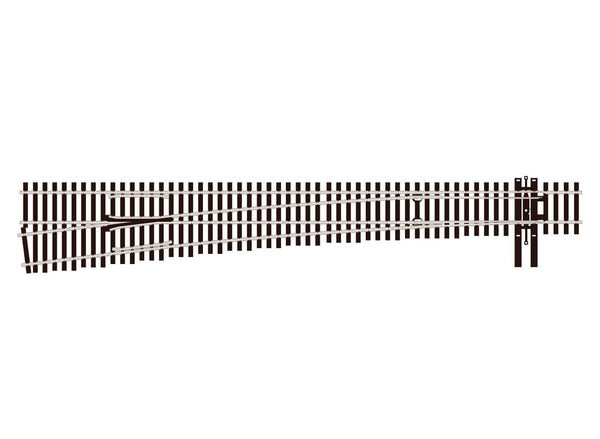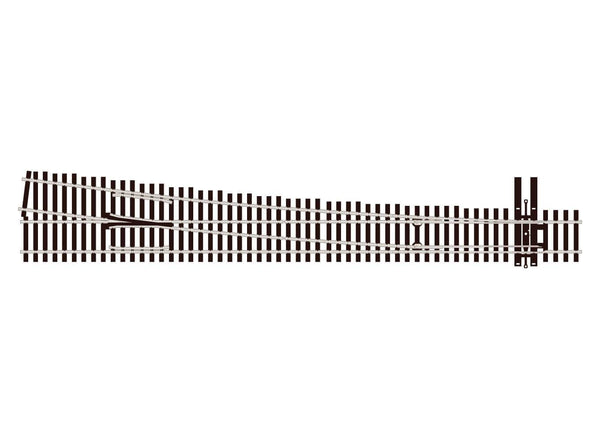BROWSE PECO PRODUCTS
Browse through our complete product portfolio.
124 Products Found
Curved Turnout, #7 Radius, Right Hand
83 Line items are realistic models of North American railroad track, with Code 83 nickel silver rail. Scaled from A.R.E.A. drawings and NMRA compliant, Code 83 features authentic tie sizes and spacing, the standard American number system for frog geometry, plus a very fine representation of traditional rail spike fixings. For more details on Electrofrog turnouts, see our Wiring the Layout publications Nos 4 and 21.
Curved Turnout, 7th Radius, Right Hand
83 Line items are realistic models of North American railroad track, with Code 83 nickel silver rail. Scaled from A.R.E.A. drawings and NMRA compliant, Code 83 features authentic tie sizes and spacing, the standard American number system for frog geometry, plus a very fine representation of traditional rail spike fixings.
Curved Turnout, Large Radius, Left Hand
If you wish to mix wheel standards on your 00/H0 layout, this is the trackage to choose. Code 100 rail allows flange depths up to 1.6mm which means that both vintage and current stock will run happily together.
The wide range of turnouts and crossings in this series includes every type, and the geometry of this range has been cleverly designed to make it easy to build convenient, complex and aesthetically pleasing formations using combinations of small, medium and large radius turnouts and crossings. Layout plans suggestions can be found in our publications ‘Track Plans for Layouts to Suit all Locations’ (Ref PM-202), ‘60 Plans for Small Railways’ (Ref no PB-3), and ‘Track Plans for Various Locations’ (Ref no PB-66).
Curved Turnout, Large Radius, Left Hand
Peco Streamline Code 75 track meets the standards of enthusiasts who prefer to run trains on scale height rail. Today most manufacturers' wheels are suitable for use on Code 75 track but some vintage models may have flanges which are too deep to clear the rail fixings. Code 75 can be easily combined with code 100 track by using the SL-113 Transition Track.
The wide range of turnouts and crossings in this series includes every type, and the geometry of this range has been cleverly designed to make it easy to build convenient, complex and aesthetically pleasing formations using combinations of small, medium and large radius turnouts and crossings. Layout plans suggestions can be found in our publications ‘Track Plans for Layouts to Suit all Locations’ (Ref PM-202), ‘60 Plans for Small Railways’ (Ref no PB-3), and ‘Track Plans for Various Locations’ (Ref no PB-66).
For more details on Electrofrog turnouts, see our Wiring the Layout publications Nos 4 and 21.
Curved Turnout, Large Radius, Left Hand
If you wish to mix wheel standards on your 00/H0 layout, this is the trackage to choose. Code 100 rail allows flange depths up to 1.6mm which means that both vintage and current stock will run happily together.
The wide range of turnouts and crossings in this series includes every type, and the geometry of this range has been cleverly designed to make it easy to build convenient, complex and aesthetically pleasing formations using combinations of small, medium and large radius turnouts and crossings. Layout plans suggestions can be found in our publications ‘Track Plans for Layouts to Suit all Locations’ (Ref PM-202), ‘60 Plans for Small Railways’ (Ref no PB-3), and ‘Track Plans for Various Locations’ (Ref no PB-66).
For more details on Electrofrog turnouts, see our Wiring the Layout publications Nos 4 and 21.
Curved Turnout, Large Radius, Right Hand
If you wish to mix wheel standards on your 00/H0 layout, this is the trackage to choose. Code 100 rail allows flange depths up to 1.6mm which means that both vintage and current stock will run happily together.
The wide range of turnouts and crossings in this series includes every type, and the geometry of this range has been cleverly designed to make it easy to build convenient, complex and aesthetically pleasing formations using combinations of small, medium and large radius turnouts and crossings. Layout plans suggestions can be found in our publications ‘Track Plans for Layouts to Suit all Locations’ (Ref PM-202), ‘60 Plans for Small Railways’ (Ref no PB-3), and ‘Track Plans for Various Locations’ (Ref no PB-66).
Curved Turnout, Large Radius, Right Hand
Peco Streamline Code 75 track meets the standards of enthusiasts who prefer to run trains on scale height rail. Today most manufacturers' wheels are suitable for use on Code 75 track but some vintage models may have flanges which are too deep to clear the rail fixings. Code 75 can be easily combined with code 100 track by using the SL-113 Transition Track.
The wide range of turnouts and crossings in this series includes every type, and the geometry of this range has been cleverly designed to make it easy to build convenient, complex and aesthetically pleasing formations using combinations of small, medium and large radius turnouts and crossings. Layout plans suggestions can be found in our publications ‘Track Plans for Layouts to Suit all Locations’ (Ref PM-202), ‘60 Plans for Small Railways’ (Ref no PB-3), and ‘Track Plans for Various Locations’ (Ref no PB-66).
For more details on Electrofrog turnouts, see our Wiring the Layout publications Nos 4 and 21.
Curved Turnout, Large Radius, Right Hand
If you wish to mix wheel standards on your 00/H0 layout, this is the trackage to choose. Code 100 rail allows flange depths up to 1.6mm which means that both vintage and current stock will run happily together.
The wide range of turnouts and crossings in this series includes every type, and the geometry of this range has been cleverly designed to make it easy to build convenient, complex and aesthetically pleasing formations using combinations of small, medium and large radius turnouts and crossings. Layout plans suggestions can be found in our publications ‘Track Plans for Layouts to Suit all Locations’ (Ref PM-202), ‘60 Plans for Small Railways’ (Ref no PB-3), and ‘Track Plans for Various Locations’ (Ref no PB-66).
For more details on Electrofrog turnouts, see our Wiring the Layout publications Nos 4 and 21.
Curved Turnout, Small Radius, Left Hand
Adapted from the existing PECO Setrack Curved turnout, this brand new development allows us to add a really useful component into the classic Streamline OO/HO Code 100 range. At last we are able to offer a tighter radius turnout for Streamline users, something that has been requested on and off for a long time. 
Curved turnouts are fantastic space savers and their benefits are often overlooked. Given that so many layouts are built to be located in small spaces the use of curved turnouts ought to be greater than it is, so these new Streamline turnouts may well address many concerns that modellers have when planning their model railway.
This turnout has been derived from the existing Setrack curved turnout the geometry departs from the common frog angle adopted by the Streamline system (which is based on a common frog angle of 12 degrees) - this turnout has a 11.25 degree frog angle and the inner radius is just 438mm, or 17.2 inches. This should not be seen as any disadvantage and the real benefit is that they will allow much tighter access where it is needed, such as in restricted places where a layout has to loop around into a fiddle yard, for example.  The standard Streamline curved turnout has a minimum inside radius of 762mm, 30 inches, so the difference is quite clear to see.
Curved Turnout, Small Radius, Right Hand
Adapted from the existing PECO Setrack Curved turnout, this brand new development allows us to add a really useful component into the classic Streamline OO/HO Code 100 range. At last we are able to offer a tighter radius turnout for Streamline users, something that has been requested on and off for a long time. 
Curved turnouts are fantastic space savers and their benefits are often overlooked. Given that so many layouts are built to be located in small spaces the use of curved turnouts ought to be greater than it is, so these new Streamline turnouts may well address many concerns that modellers have when planning their model railway.
This turnout has been derived from the existing Setrack curved turnout the geometry departs from the common frog angle adopted by the Streamline system (which is based on a common frog angle of 12 degrees) - this turnout has a 11.25 degree frog angle and the inner radius is just 438mm, or 17.2 inches. This should not be seen as any disadvantage and the real benefit is that they will allow much tighter access where it is needed, such as in restricted places where a layout has to loop around into a fiddle yard, for example.  The standard Streamline curved turnout has a minimum inside radius of 762mm, 30 inches, so the difference is quite clear to see.
Decoupler A/HD type
For use with Peco Simplex couplings (R-2) and original Hornby Dublo (TM) couplings. Moulded in brown plastic to resemble check rails. Can also be used with 0-16.5 track.
Decoupler Magni-Simplex type
Magnetic uncoupler for use with stock fitted with the Peco Magni Simplex (R-3) couplings.
Decoupler RH type
For use with the tension lock couplers fitted to Hornby(TM), Bachmann(TM), Dapol(TM) etc. rolling stock on Peco Streamline Track.
Flexible Track, Bibloc Sleeper
Bibloc track is the latest form of concrete sleepering to be seen in Britain and around Europe; the rails being supported on concrete blocks which are kept to gauge by a connecting steel rod which is concealed in the ballast when the track has been laid.
Peco Streamline Code 75 track meets the standards of enthusiasts who prefer to run trains on scale height rail. Today most manufacturers' wheels are suitable for use on Code 75 track but some vintage models may have flanges which are too deep to clear the rail fixings. Code 75 can be easily combined with code 100 track by using the SL-113 Transition Track.
Flexible Track, Concrete Sleeper
Concrete sleeper track has been in use on the railways of Britain since around 1940, usually combined with wooden sleeper turnouts and crossings, and this track is a faithful representation of this design.
If you wish to mix wheel standards on your 00/H0 layout, this is the trackage to choose. Code 100 rail allows flange depths up to 1.6mm which means that both vintage and current stock will run happily together. The wide range of turnouts and crossings in this series includes every type, and the geometry of this range has been cleverly designed to make it easy to build convenient, complex and aesthetically pleasing formations.
Flexible Track, Concrete Sleeper
This track models the most common form of concrete sleepering in use in Britain today, with flat bottom rail and faithfully replicated Pandrol rail fixings.
Peco Streamline Code 75 track meets the standards of enthusiasts who prefer to run trains on scale height rail. Today most manufacturers' wheels are suitable for use on Code 75 track but some vintage models may have flanges which are too deep to clear the rail fixings. Code 75 can be easily combined with code 100 track by using the SL-113 Transition Track.
The wide range of turnouts and crossings in this series includes every type, and the geometry of this range has been cleverly designed to make it easy to build convenient, complex and aesthetically pleasing formations. For more details on Electrofrog turnouts, see our Wiring the Layout publications Nos 4 and 21.
Flexible Track, Concrete Sleeper
83 Line items are realistic models of North American railroad track, with Code 83 nickel silver rail. Scaled from A.R.E.A. drawings and NMRA compliant, Code 83 features authentic tie sizes and spacing, the standard American number system for frog geometry, plus a very fine representation of the rail fixings.
Flexible Track, Concrete Sleeper
Concrete sleeper track has been in use on the railways of Britain since around 1940, usually combined with wooden sleeper turnouts and crossings, and this track is a faithful representation of this design.
If you wish to mix wheel standards on your 00/H0 layout, this is the trackage to choose. Code 100 rail allows flange depths up to 1.6mm which means that both vintage and current stock will run happily together. The wide range of turnouts and crossings in this series includes every type, and the geometry of this range has been cleverly designed to make it easy to build convenient, complex and aesthetically pleasing formations.
Flexible Track, Steel Sleeper
Steel sleeper track is not a recent innovation, having been introduced in the late 19th Century. It proved particularly useful in places such as India and Africa where wooden sleepers could be attacked by termites. Our model is of the modern style, which was brought into use here in Britain in the late 1980's, and features flat bottom rail with Pandrol fixings.
Peco Streamline Code 75 track meets the standards of enthusiasts who prefer to run trains on scale height rail. Today most manufacturers' wheels are suitable for use on Code 75 track but some vintage models may have flanges which are too deep to clear the rail fixings. Code 75 can be easily combined with code 100 track by using the SL-113 Transition Track.
The wide range of turnouts and crossings in this series includes every type, and the geometry of this range has been cleverly designed to make it easy to build convenient, complex and aesthetically pleasing formations. For more details on Electrofrog turnouts, see our Wiring the Layout publications Nos 4 and 21.
Flexible Track, Wooden Sleeper
If you wish to mix wheel standards on your 00/H0 layout, this is the trackage to choose. Code 100 rail allows flange depths up to 1.6mm which means that both vintage and current stock will run happily together.
The wide range of turnouts and crossings in this series includes every type, and the geometry of this range has been cleverly designed to make it easy to build convenient, complex and aesthetically pleasing formations. Layout plans suggestions can be found in our publications ‘Track Plans for Layouts to Suit all Locations’ (Ref PM-202), ‘60 Plans for Small Railways’ (Ref no PB-3), and ‘Track Plans for Various Locations’ (Ref no PB-66).
Flexible Track, Wooden Sleeper
Peco Streamline Code 75 track meets the standards of enthusiasts who prefer to run trains on scale height rail. Today most manufacturers' wheels are suitable for use on Code 75 track but some vintage models may have flanges which are too deep to clear the rail fixings. Code 75 can be easily combined with code 100 track by using the SL-113 Transition Track.
The wide range of turnouts and crossings in this series includes every type, and the geometry of this range has been cleverly designed to make it easy to build convenient, complex and aesthetically pleasing formations. Layout plans suggestions can be found in our publications ‘Track Plans for Layouts to Suit all Locations’ (Ref PM-202), ‘60 Plans for Small Railways’ (Ref no PB-3), and ‘Track Plans for Various Locations’ (Ref no PB-66).
For more details on Electrofrog turnouts, see our Wiring the Layout publications Nos 4 and 21.
Flexible Track, Wooden Sleeper
83 Line items are realistic models of North American railroad track, with Code 83 nickel silver rail. Scaled from A.R.E.A. drawings and NMRA compliant, Code 83 features authentic tie sizes and spacing, the standard American number system for frog geometry, plus a very fine representation of traditional rail spike fixings.
Hayes Bumper
Typical American style buffer with central buffing plate, clips between the rails.
Inspection Pit
Kit includes 6 pit mouldings (total length 297mm), 2 pairs of steps and 4 walkway plates. The modular design makes it easy to assemble pits of any length. With several kits you can model the train length pits seen at many maintenance depots; a great addition to the LK-80 Modern Train Shed unit or create a modern diesel/EMU servicing shed using the Wills SSM300 Modern Industrial Building and SSM315 Extension kits.
Insulated Rail Joiner
Peco Streamline Code 75 track meets the standards of enthusiasts who prefer to run trains on scale height rail. This rail height is used for our 00/H0 Fine Standard Track Systems (Ref nos. SL-100F, 102F, 104F, 106F) and our H0m (SL-1400) and H0n3 (SL-1500) track ranges; these joiners can also be used with the Code 83 Line American range (SL-8300 and 8302) and Code 75 Bullhead track (SL-108F).
Design prevents adjacent rails from touching whilst holding them in alignment. Insulated rail joiners are required to provide electrical breaks where Electrofrog turnouts are used, for more details see our Wiring the Layout publications Nos 4 and 21.
Insulated Rail Joiner
Designed to be used with our 00/H0 Code 100 track systems (Ref nos. SL-100 and 102); also with 0 Gauge Bullhead (SL-700BH) and 0-16.5/0n30 (SL-500) track systems.
Design prevents adjacent rails from touching whilst holding them in alignment. Insulated rail joiners are required to provide electrical breaks where Electrofrog turnouts are used, for more details see our Wiring the Layout publications Nos 4 and 21.
OO Bullhead Large Radius Y Turnout
The PECO Streamline OO Bullhead track range has shaped up to be a very comprehensive system comprising flexible track, bullhead joiners, buffer stop, large radius, medium radius turnout, a crossing, double & single slips and now Y turnouts. There's enough there already for modellers to build a truly authentic steam-to-diesel transition period layout.
- PECO Streamline OO Bullhead Large Radius Y Turnout, Unifrog
- Shares the same geometry as the existing Streamline Code 100, 75 flat bottom tracks systems
- Compatible with existing Bullhead system
- Uses standard SL-110 Code 75 rail joiner or the SL-114 Bullhead rail joiner
- Length 220mm, 8.7 inches
- Radius 1829mm, 72 inches
- Frog angle 12 degrees
- Unifrog
- High quality nickel silver rail for all rail parts, for optimal electrical conductivity
- One-piece machined point blade
- Over-centre spring to lock the point blade in place
- An excellent track component where space restrictions prevent standard turnouts being used, such as in a goods yard.
OO Bullhead Medium Radius Turnout - Left Hand
The PECO Streamline OO Bullhead track range has shaped up to be a very comprehensive system comprising flexible track, bullhead joiners, buffer stop, large radius and medium radius turnouts , a crossing and two slips. There's enough there already for modellers to build a truly authentic steam to diesel transition period layout.
OO Bullhead Medium Radius Turnout - Right Hand
The PECO Streamline OO Bullhead track range has shaped up to be a very comprehensive system comprising flexible track, bullhead joiners, buffer stop, large radius and medium radius turnouts , a crossing and two slips. There's enough there already for modellers to build a truly authentic steam to diesel transition period layout.
OO Bullhead Small Radius Turnout - Left Hand
The PECO Streamline OO Bullhead track range has shaped up to be a very comprehensive system comprising flexible track, bullhead joiners, buffer stop, large radius, medium radius turnout, a crossing, double & single slips, Y turnouts and now Small Radius Turnouts. There's enough there already for modellers to build a truly authentic steam-to-diesel transition period layout.
- PECO Streamline OO Bullhead Small Radius Turnout, Unifrog
- Shares the same geometry as the existing Streamline Code 100, 75 flat bottom tracks systems
- Compatible with existing Bullhead system
- Uses standard SL-110 Code 75 rail joiner or the SL-114 Bullhead rail joiner
- Length 185mm
- Radius 610mm
- Frog angle 12 degrees
- Unifrog
- High quality nickel silver rail for all rail parts, for optimal electrical conductivity
- An excellent track component where space restrictions prevent standard turnouts being used.
OO Bullhead Small Radius Turnout - Right Hand
The PECO Streamline OO Bullhead track range has shaped up to be a very comprehensive system comprising flexible track, bullhead joiners, buffer stop, large radius, medium radius turnout, a crossing, double & single slips, Y turnouts and now Small Radius Turnouts. There's enough there already for modellers to build a truly authentic steam-to-diesel transition period layout.
- PECO Streamline OO Bullhead Small Radius Turnout, Unifrog
- Shares the same geometry as the existing Streamline Code 100, 75 flat bottom tracks systems
- Compatible with existing Bullhead system
- Uses standard SL-110 Code 75 rail joiner or the SL-114 Bullhead rail joiner
- Length 185mm
- Radius 610mm
- Frog angle 12 degrees
- Unifrog
- High quality nickel silver rail for all rail parts, for optimal electrical conductivity
- An excellent track component where space restrictions prevent standard turnouts being used.
OO/HO Scale Rule
This stainless steel scale rule is a valuable tool for modelling in British 00 Gauge. It shows scale measurements from 3ins to 50ft, marked at 1:76.2 scale. It also includes markings for track gauge and spacing.
OO/HO Small Radius Y Turnout, Unifrog
The NEW Unifrog Conversion
The latest conversion to Unifrog is now available. This time we have updated the Streamline OO/HO scale Code 100 Small Radius "Y" turnout to conform to this new format. Produced from brand new tooling this replaced the former Insulfrog and Electrofrog SL-97 and SL-E97 (both of these are now discontinued and out of stock).
Y Turnouts are really useful track components - their main benefit being as great space-savers. By combining the Y with the short crossing you can create a tight radius double junction and using several Ys together allows you to fit more routes in a restricted space. Ideal when building small loco yards and goods sidings. It's what the real railways would have done after all!
The Unifrog Conversion
On a Unifrog turnout the frog tip and wing rails are electrically isolated from all other rails. The turnout can be used as supplied on a DC or DCC layout without any modification, using the standard SL-10 rail joiner. If desired, the frog tip and wing rails can be powered by connecting the wire welded underneath to a changeover switch or microswitch working in unison with one of our turnout motors. Basically, as supplied the turnout operates as an Insulfrog turnout. If the frog is powered then it operates as an Electrofrog turnout. So, the best of both worlds in one unit!
PECO Streamline OO/HO Transition Track Code 83/Code 70
PECO Streamline transition track for connecting Code 83 and Code 70 track.
Whilst our HO Code 83 track is perfect for modelling American mainlines, this new Code 70 track is just right for secondary lines, lightly-used branches, sidings, etc. Indeed, it will be perfect for modelling the early-to-mid 20th century railroading era when lighter rail was more commonly used. Featuring accurate rail spike detail, correctly proportioned ties (sleepers) and nickel silver rail, this new flexible track has been produced to the same high standard that modellers have come to expect from PECO and confirms to the specifications laid down by the NMRA.
Rail Joiner
Peco Streamline Code 75 track meets the standards of enthusiasts who prefer to run trains on scale height rail. This rail height is used for our 00/H0 Fine Standard Track Systems (Ref nos. SL-100F, 102F, 104F, 106F) and our H0m (SL-1400) and H0n3 (SL-1500) track ranges; these joiners can also be used with the Code 83 Line American range (SL-8300 and 8302) and Code 75 Bullhead track (SL-108F). Insulated rail joiners are required to provide electrical breaks where Electrofrog turnouts are used, for more details see our Wiring the Layout publications Nos 4 and 21.
Re-Railer
Makes re-railing steam locos and bogie vehicles simple - less handling too.
Also suitable for re-railing 0-16.5/0n30 locomotives and stock.
TPWS Grid
Easily assembled kit of a Train Protection and Warning System grid. Required by Railway Regulations on all main lines since 2004.
Transition Tracks
For use between sections of Code 100 and Code 75 track, so for example could be used to incorporate a Code 75 Asymmetric 3- way Turnout (SL-E199) into a Code 100 layout, or to connect a Code 100 Streamline or Setrack 'fiddle yard' to a Code 75 scenic section.
Normally conductive; although the electrical connections between the 2 rail types can be cut to provide an electrical break. Supplied in a pack of 4.
Turnout, #5 Radius, Left Hand
83 Line items are realistic models of North American railroad track, with Code 83 nickel silver rail. Scaled from A.R.E.A. drawings and NMRA compliant, Code 83 features authentic tie sizes and spacing, the standard American number system for frog geometry, plus a very fine representation of traditional rail spike fixings. For more details on Electrofrog turnouts, see our Wiring the Layout publications Nos 4 and 21.
Turnout, #5 Radius, Right Hand
83 Line items are realistic models of North American railroad track, with Code 83 nickel silver rail. Scaled from A.R.E.A. drawings and NMRA compliant, Code 83 features authentic tie sizes and spacing, the standard American number system for frog geometry, plus a very fine representation of traditional rail spike fixings. For more details on Electrofrog turnouts, see our Wiring the Layout publications Nos 4 and 21.
Turnout, #8 Radius, Left Hand
83 Line items are realistic models of North American railroad track, with Code 83 nickel silver rail. Scaled from A.R.E.A. drawings and NMRA compliant, Code 83 features authentic tie sizes and spacing, the standard American number system for frog geometry, plus a very fine representation of traditional rail spike fixings. For more details on Electrofrog turnouts, see our Wiring the Layout publications Nos 4 and 21.
Turnout, #8 Radius, Right Hand
83 Line items are realistic models of North American railroad track, with Code 83 nickel silver rail. Scaled from A.R.E.A. drawings and NMRA compliant, Code 83 features authentic tie sizes and spacing, the standard American number system for frog geometry, plus a very fine representation of traditional rail spike fixings. For more details on Electrofrog turnouts, see our Wiring the Layout publications Nos 4 and 21.
Turnout, 5th Radius, Left Hand
83 Line items are realistic models of North American railroad track, with Code 83 nickel silver rail. Scaled from A.R.E.A. drawings and NMRA compliant, Code 83 features authentic tie sizes and spacing, the standard American number system for frog geometry, plus a very fine representation of traditional rail spike fixings.
Turnout, 5th Radius, Right Hand
83 Line items are realistic models of North American railroad track, with Code 83 nickel silver rail. Scaled from A.R.E.A. drawings and NMRA compliant, Code 83 features authentic tie sizes and spacing, the standard American number system for frog geometry, plus a very fine representation of traditional rail spike fixings.
Turnout, 6th Radius, Left Hand, Unifrog
83 Line items are realistic models of North American railroad track, with Code 83 nickel silver rail. Scaled from A.R.E.A. drawings and NMRA compliant, Code 83 features authentic tie sizes and spacing, the standard American number system for frog geometry, plus a very fine representation of traditional rail spike fixings. For more details on Electrofrog turnouts, see our Wiring the Layout publications Nos 4 and 21.
Turnout, 8th Radius, Left Hand
83 Line items are realistic models of North American railroad track, with Code 83 nickel silver rail. Scaled from A.R.E.A. drawings and NMRA compliant, Code 83 features authentic tie sizes and spacing, the standard American number system for frog geometry, plus a very fine representation of traditional rail spike fixings.
Turnout, 8th Radius, Right Hand
83 Line items are realistic models of North American railroad track, with Code 83 nickel silver rail. Scaled from A.R.E.A. drawings and NMRA compliant, Code 83 features authentic tie sizes and spacing, the standard American number system for frog geometry, plus a very fine representation of traditional rail spike fixings.



